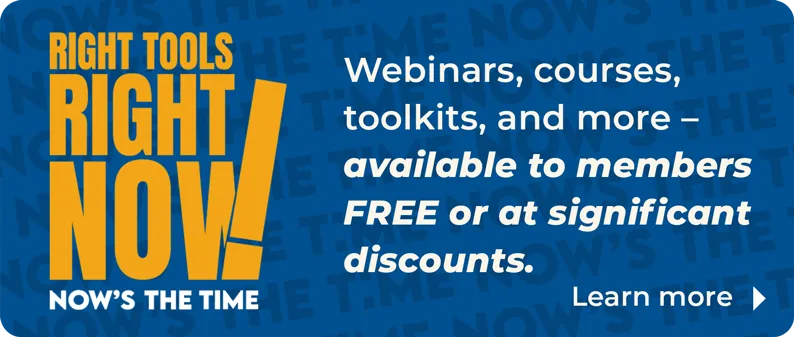How do you view your e-mail? Blessing or curse? The average AE receives between 200 and 500 legitimate messages a day. That translates into hours in front of the inbox. But it is possible to control your e-mail instead of letting it control you. All you have to do is learn a few new tricks and commit to breaking some old habits. These steps will get started.
Schedule ‘quality’ time with your inbox
Allocate specific times in your day for reading e-mail—one hour, two or three times a day, for example. This is the biggest time-saver. Ignore incoming e-mail until the designated processing time. Keep your e-mail window closed or minimized, and regardless of that chime, never stop what you’re doing to answer incoming messages.
To keep focused, you might also consider changing Outlook’s default view to open to your calendar and task list rather than your inbox. Let people know that if they need to reach you instantly, they should call you. When it’s e-mail processing time, however, shut the office door, turn off the phone, and plow through the messages.
Although it may seem strange to some people, Toni L. Cockeram, rce, e-pro of the Brunswick Glynn County Board of Realtors®, Ga., refuses to look at her e-mail first thing in the morning. Instead, Cockeram works on her to-do list or holds her Monday morning staff meeting. After an hour in the office, she checks her e-mail. “I don’t want my e-mail owning me,” she explains.
Act on every e-mail
Never leave an e-mail in your inbox; always take action. “With every e-mail you receive, quickly decide what action is necessary,” suggests Dianna F. Krus, president, Clear Concepts Inc., and a certified training manager and expert in all facets of employee development and communication. According to Krus, if no action is needed, you have two choices: Delete it from your inbox or file it as reference material.
“If action is needed, there are three options: Answer it immediately. Delegate it if you are not the most appropriate person to answer it. Defer it to work on later if the completion of it would take more than two minutes,” she explains.
In her system, Krus assigns a value to each deferred e-mail—critical, important, or moderately important—and creates a corresponding folder to house the messages. This method allows you to answer e-mail according to its importance.
Process your e-mail first, then respond
Think of your entire inbox, rather than the individual e-mail messages, as your task at hand. Although it’s a habit for most, avoid the time trap of getting excited about responding to one e-mail before you’ve sorted and organized the rest of the new mail in your box. This is a huge time trap. Put the important e-mail in your priority reply folder or put a task on your to-do list and get back to clearing your inbox. If you don’t spend more than a minute or two on each e-mail, you can get back to that important e-mail in just 10 to 20 minutes.
Your inbox is just your inbox
Let your e-mail inbox serve the same purpose as your paper mailbox: retrieve mail and take appropriate action. Your inbox is not a to-do list for the week or month; it’s not a content management system for the storage of documents, presentations, or other attachments; and it’s not a way to track your accomplished tasks or projects.
Teach and learn subject line shorthand
Short, descriptive subject lines can save loads of time when processing your inbox. Although you can’t teach good subject line writing to everyone who sends you e-mail, you can educate yourself, your staff, and maybe even your directors. Institute the use of these subject line shorthand practices in your office:
* NRN: no reply needed
* TY: thank you
* NRB 10/30 3:00 p.m.: need reply by date and time
* Meet 10:00 10/30 Okay? END or EOM. (Put the whole message in the subject line.)
* EOM or END: end of message. Use this when the whole message is in the subject line and there’s no reason for the recipient to open the e-mail.
* Pick up the phone once in a while. You’d be surprised by how much you can accomplish in a single phone call rather than through several e-mail exchanges.
Set up separate e-mail addresses
If you haven’t mastered managing your primary inbox, it’s frightening to think of having several, but this technique may help you manage the different roles you play in your association office. For example, have one public address that’s posted on your Web site and in association directories so that members and the public can send you questions or comments. Use another e-mail address just for directors and another for newsletters, Listservs, or discussion groups to which you subscribe. Add more accounts as needed, but limit them to five. Guard your main e-mail address like you do your home phone number. Don’t use it when purchasing online or when subscribing to anything; this will just increase your spam. And always have a separate personal e-mail address off the office network for friends and family.
rae
Sources: Stever Robbins, LeadershipDecisionworks, (LeadershipDecisionworks.com); Peggy Duncan, author of Put Time Management to Work: Get Organized, Streamline Processes, Use the Right Technology.
Organizing tip for Outlook
Using Microsoft Outlook, Sharon Kerrigan, e-PRO, at South Tahoe Association of Realtors®, has fine-tuned her e-mail system so that an alert message appears in the right-hand corner of her screen telling her that a new e-mail has arrived—it even specifies the sender. “When I’m waiting for an important e-mail, I can click right on it. It’s like answering my phone.”
Set up a direct folder system using the Rules in Outlook so certain e-mails never reach your inbox. For example, Kerrigan sends AETalk directly into an AE folder. This allows you to read specified e-mails at your convenience.
Advertisement








